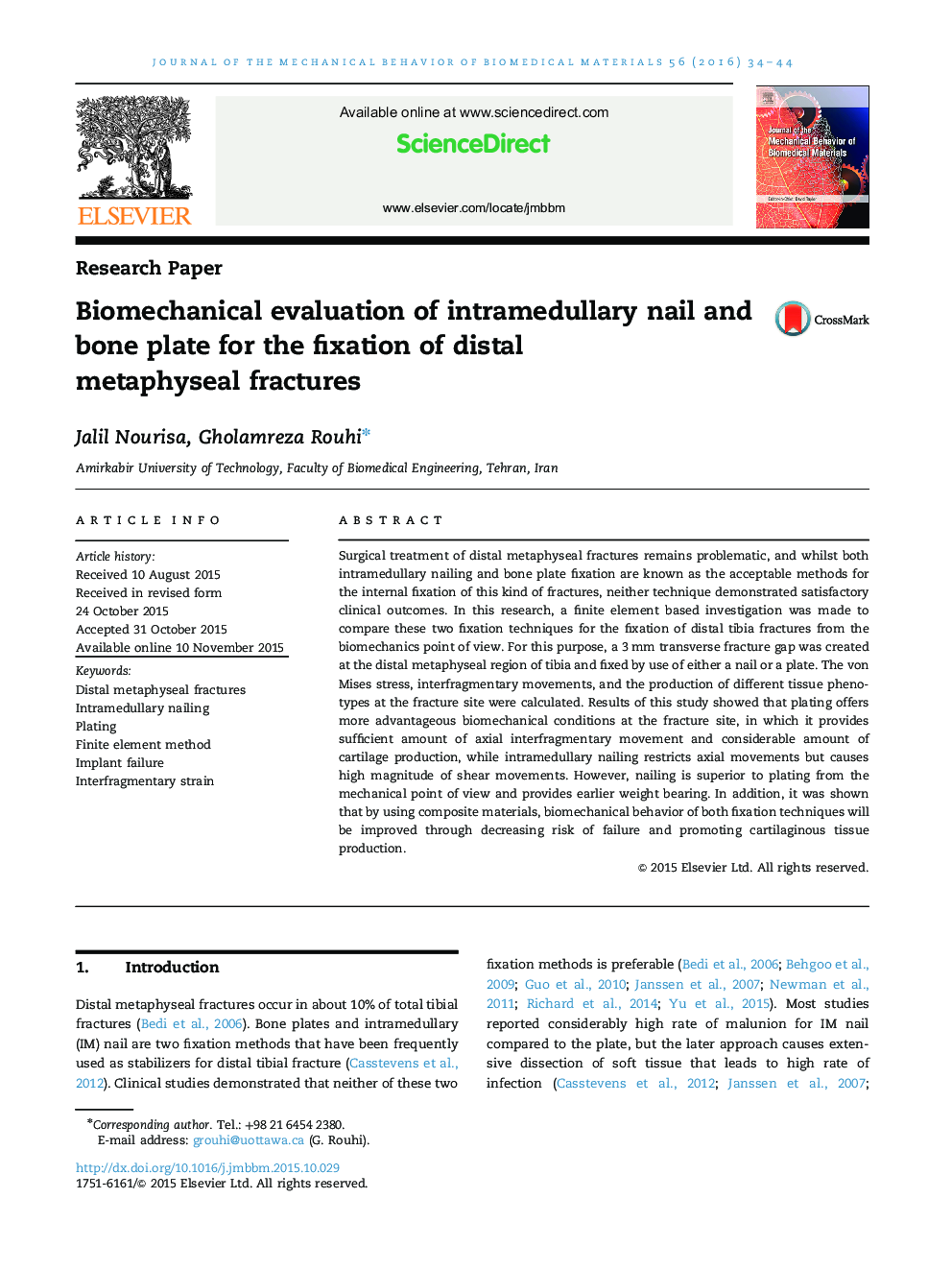| کد مقاله | کد نشریه | سال انتشار | مقاله انگلیسی | نسخه تمام متن |
|---|---|---|---|---|
| 810521 | 1469089 | 2016 | 11 صفحه PDF | دانلود رایگان |
Surgical treatment of distal metaphyseal fractures remains problematic, and whilst both intramedullary nailing and bone plate fixation are known as the acceptable methods for the internal fixation of this kind of fractures, neither technique demonstrated satisfactory clinical outcomes. In this research, a finite element based investigation was made to compare these two fixation techniques for the fixation of distal tibia fractures from the biomechanics point of view. For this purpose, a 3 mm transverse fracture gap was created at the distal metaphyseal region of tibia and fixed by use of either a nail or a plate. The von Mises stress, interfragmentary movements, and the production of different tissue phenotypes at the fracture site were calculated. Results of this study showed that plating offers more advantageous biomechanical conditions at the fracture site, in which it provides sufficient amount of axial interfragmentary movement and considerable amount of cartilage production, while intramedullary nailing restricts axial movements but causes high magnitude of shear movements. However, nailing is superior to plating from the mechanical point of view and provides earlier weight bearing. In addition, it was shown that by using composite materials, biomechanical behavior of both fixation techniques will be improved through decreasing risk of failure and promoting cartilaginous tissue production.
Journal: Journal of the Mechanical Behavior of Biomedical Materials - Volume 56, March 2016, Pages 34–44
